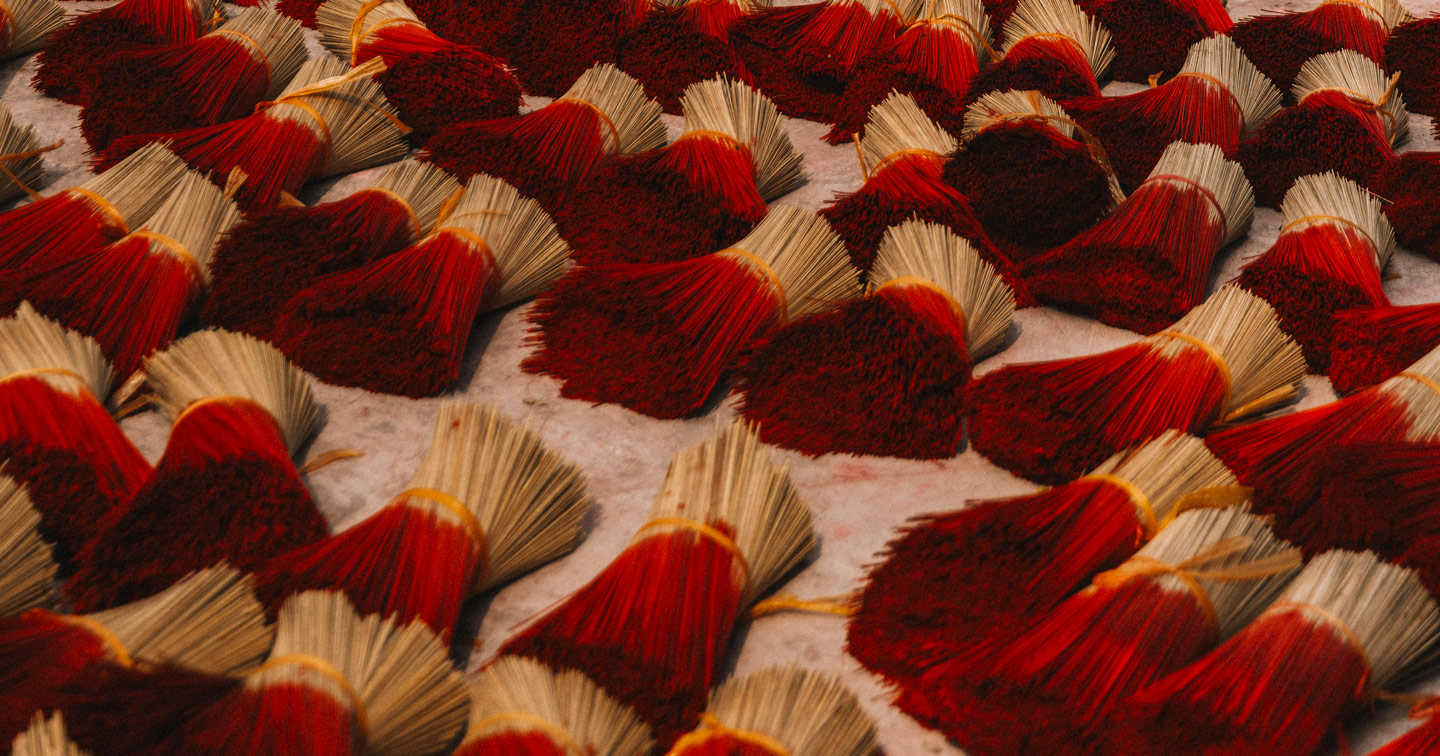Published 2nd Oct. 2024
Reading time
Vietnam is as varied in its culture and cuisine as in its landscapes and topography. Tuck into stuffed Bahn Mi against the bustling backdrop of Ho Chi Minh City; slurp on steaming bowls of Cao Lau among the vibrant lanterns of Hoi An’s Ancient Town; and master your chopstick skills while sampling Hanoi’s speciality dish of Bun Cha. Flavourful, fresh and filling, Vietnam’s cuisine promises to punctuate your trip with memorable foodie moments and fuel your exploration of this compelling country. If you’re craving a taste of this Southeast Asian nation’s rich culinary customs, read on for our guide to traditional food in Vietnam.
One of Vietnam’s most well-known delicacies, bahn mi are baguette-style sandwiches brimming with chả lụa (Vietnamese sausage), coriander, cucumber, pickled daikon, ham, red chilli, mayonnaise and pâté. The fresh and crunchy baguette combines perfectly with these flavour-packed fillings. Introduced to Vietnam by the French in the 19th century, baguettes fast became a staple food throughout the 20th century. Bahn mi are most closely linked with Ho Chi Minh City, where the much-loved street food was first formulated; now found nationwide, many travellers seek out the sandwich as their first taste of the country.
Often served as the first meal of the day – a far cry from a British full English or French pastry - phở is a brothy noodle soup made with meat, rice noodles, herbs and broth. The most common varieties are beef or chicken, although the steaming soup can easily be customised to include different types of stock or spices. Likely originating in the city of Nam Định in the 20th century, the exact provenance of phở is widely debated, although its popularity has earned it ‘national dish’ status.

Another brothy noodle dish, cao lau comes from the coastal city of Hoi An. Its name originates from the Chinese character for ‘steamed high’, and true cao lau must be made using water from a local well in the city, along with pork, thick noodles, crispy wonton crackers, broth and herbs. The thick, smoked noodles have a distinctive flavour, while the crackers provide a crunchy contrast to the tender pork slices. Found predominantly in Hoi An, this comforting dish is a must-try during a stay in the atmospheric and lantern-lit city.
Hanoi’s signature dish, bun cha, offers an original dining experience as you combine your own selection of cold vermicelli noodles, grilled pork meatballs, chopped herbs, leafy vegetables and dipping sauce or broth. Traditionally eaten as a lunchtime dish, dedicated bun cha restaurants are dotted across the northern Vietnamese city. Enjoy it like a local by using your chopsticks to dip the pork into the broth and experimenting with various combinations of the ingredients in each bite.

Despite not originating in Vietnam, bánh bao are now a staple snack sold by street food vendors and corner shops across the country, placing them firmly on our list of traditional food in Vietnam. The steamed buns are stuffed with a variety of fillings, and some of the best include pork, chicken, Chinese sausage or hard-boiled eggs. Introduced to Vietnam by Chinese immigrants, the ball-shaped buns are based on the Cantonese tai pao or da bao.

Although technically not a traditional food in Vietnam, ca phe trung (or ‘egg coffee’) is an integral part of the country’s culinary tradition (and arguably does resemble more of a dessert than a drink). Made with fluffy beaten egg yolks, sweet condensed milk and coffee, the sugary drink is bound to give you a boost for a busy day of exploring Vietnam’s dynamic cities.
Written by Luisa Watts

Dive into Vietnam’s vistas on a holiday tailor-made by our talented consultants. We'll guide you down roads less travelled with visits to regions like Ha Giang, where you can stay in authentic homestays and connect with local Hmong tribes. Our savvy in-country Concierges and guides are experts at adapting tours to help you find adventure in Vietnam’s caves, romance on its beaches or family fun throughout this friendly country. Plus, with our e-Visa arrangement, fast-track airport services and options for every budget, you can relax knowing the finer details are sorted.
ENQUIRE NOWPractical advice and inspiration for your next trip

Hanoi is a delight for the senses; a charming cacophony of buzzing scooters, fragrant street food, peeling colonial architecture and colourful culture. If you only have time for one day in Vietnam’s capital, here’s how we’d spend 24 hours in Hanoi – from museum-hopping through the city’s complex history to a culinary tour of the best bun cha in town. Breakfast Get your morning exercise Hanoi-style on the shores of West Lake.
14th September 2023 - Vietnam 24 Hours In

As Vietnam’s largest city, it’s no surprise that Ho Chi Minh City boasts an abundance of cultural and historical highlights. With a population of nine million and a whopping seven million motorbikes (yes, you read that right), the city is bursting with activity in every nook and cranny. It’s an utter delight for the senses. There’s no shortage of food to be tasted, history to be learnt and city views to drool over – it would take a lifetime to run out of things to do in Ho Chi Minh City.
12th September 2023 - Vietnam Travel Inspiration

When it comes to romance, Greece’s islands set the bar high. From Paros’ sun-kissed beaches and Folegandros’ blush-pink blooms to Sifnos’ culinary delights and Hydra’s slow-paced streets, each island radiates beauty. Whether you fall in love with the sunset in Santorini or the atmosphere in Apollonia, the perfect spot awaits. Read on to discover the most romantic islands in Greece... Paros Folegandros Sifnos Hydra Santorini Paros Best for:
27th October 2025 - Greece Travel Inspiration

Our team of destination experts will get to know you and your unique requirements for your holiday

We work with you to build an ultra-personalised holiday itinerary with your choice of accommodation, experiences and activities

All of our holidays include little extras designed to make a big difference to your trip, from fast-tracking you through airport check-in and security to our network of local Concierges